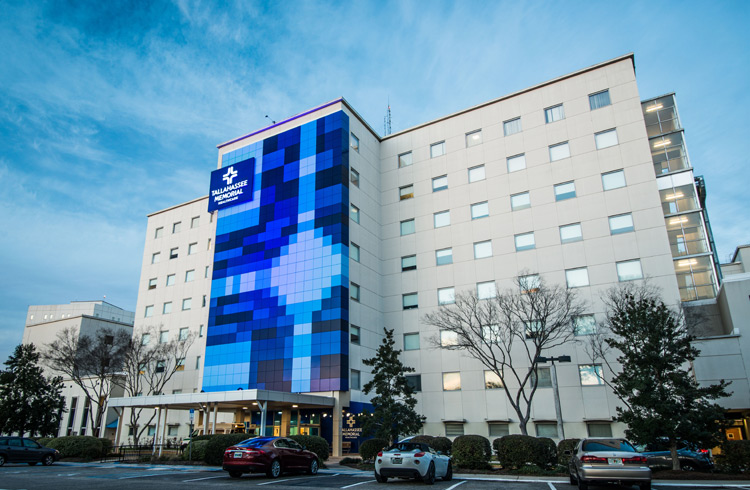The Nurse Behind the NICU Baby Halloween Costumes
December 14, 2023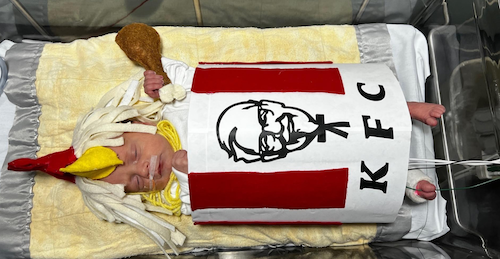
By: Tallahassee Memorial HealthCare
Categories: Healthy Living, Maternity
Tags: Pediatric, Maternity Care
Every October, the nurses in our Neonatal Intensive Care Unit (NICU) at Tallahassee Memorial HealthCare (TMH) craft Halloween costumes made of felt for our hospital’s tiniest patients. Yes, behind every tiny baby in a Halloween costume is a team of crafty NICU nurses.
In addition to winning hearts all over the internet, the babies in costume help interject a little bit of normal and celebration into a NICU stay for their parents and families. So where and how did our heart-“felt” Halloween tradition begin?
It all started with, Yamanda Williams, an RN who knows what it’s like to have a baby in the NICU.
Yamanda spent most of her life in Bainbridge, Georgia. She and her husband, Dorie, welcomed their first daughter into the world 23 years ago after un uncomplicated pregnancy and delivery.
Four years later, she learned she was pregnant again. Yamanda had just received her Licensed Practical Nurse (LPN) credentials from Bainbridge State College and was caring for adult patients. This time, her pregnancy was different.
The Warning Signs
“I’m tall so I wasn’t showing very much,” Yamanda said. “I had finally gotten a baby bump to boast about, and I realized I’d gained 7 pounds in a week. I thought that was particularly odd because I hadn’t gained weight in my previous pregnancy.”
Yamanda consulted with her doctor, and they considered the weight gain typical. “My blood pressure was normal to that point,” she said, “but I was experiencing swelling and puffiness. I had a couple headaches and was short of breath. My doctor thought it was just my weight coming in.”
In reality, Yamanda was suffering from preeclampsia. Preeclampsia causes high blood pressure and high levels of protein in the urine that can compromise both the health of the mother and the baby. Symptoms include shortness of breath, headaches, swelling and weight gain.
Given her doctor’s optimism, Yamanda took her daughter to the park to soak in the last few moments with her as an only child.
“I was trying to spend that time just us hanging out, but I started to feel like an elephant was on my chest,” she said. “Sure enough, my blood pressure was very high, so I went to the doctor. The last reading was 220 over 118.” Normal blood pressure for an adult is around 120 over 80.
“They put me on magnesium sulfate overnight. Then I was admitted to the hospital and had my daughter Raven by emergency c-section.”
Yamanda’s second daughter was born early at 34 weeks and weighed 3 pounds, 12 ounces. On the day she met her daughter, she also came face-to-face with her future.
“The NICU experience solidified things for me. I knew I wanted to work in a NICU.”
From LPN to RN
Yamanda completed a Registered Nurse (RN) bridge program at Darton State College (now Albany State University) in 2010. She applied to work in NICUs at TMH and in Georgia, and the one in Georgia hired her first.
“I stayed there a few years before finally making my way to TMH,” she joked.
TMH was closer to home for Yamanda, but she was also drawn in by the staff, the caring administrators and the direction of the NICU. “I was impressed with the advancement of care, in having a transport team and the treatment of cooling babies.”
TMH is home to a Level II NICU and the region’s only Level III NICU, offering the most advanced care in the Big Bend region for babies. Yamanda has been a night-shift nurse in the TMH NICU since 2015.
Those late nights led to inspiration. “I am a Pinterest nut! I saw people who crocheted costumes for infants, but I didn’t know how to crochet,” she said. “I thought, ‘I’m not good at crochet, but I’m good at piecing random things together.’ ”
In 2019, her inspiration sparked a conversation among her colleagues: “Felt! Felt! Let’s do felt! Felt is soft!”
The team agreed the felt pieces consume less time and the material’s softness does not stress the baby. Yamanda recalled, “We started talking one night, like, ‘Why don’t we seriously start doing this little thing? Wouldn’t that be cute? How could we pull it off?’ ”
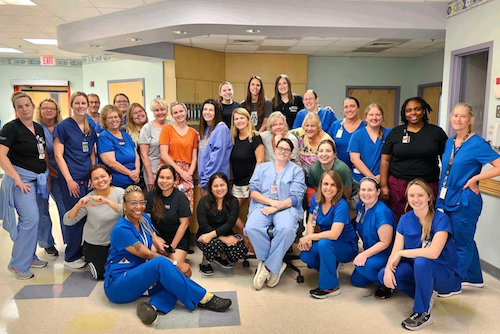
The NICU team night shift team works together to create the costumes each year.
Costumes Become a Tradition
The “little thing” was very popular. The social media post of the babies dressed in costumes received 1,800 likes, 223 comments and was shared 2,600 times. The team went on to create holiday costumes for the babies in December, which they’ve continued since with increasing popularity.
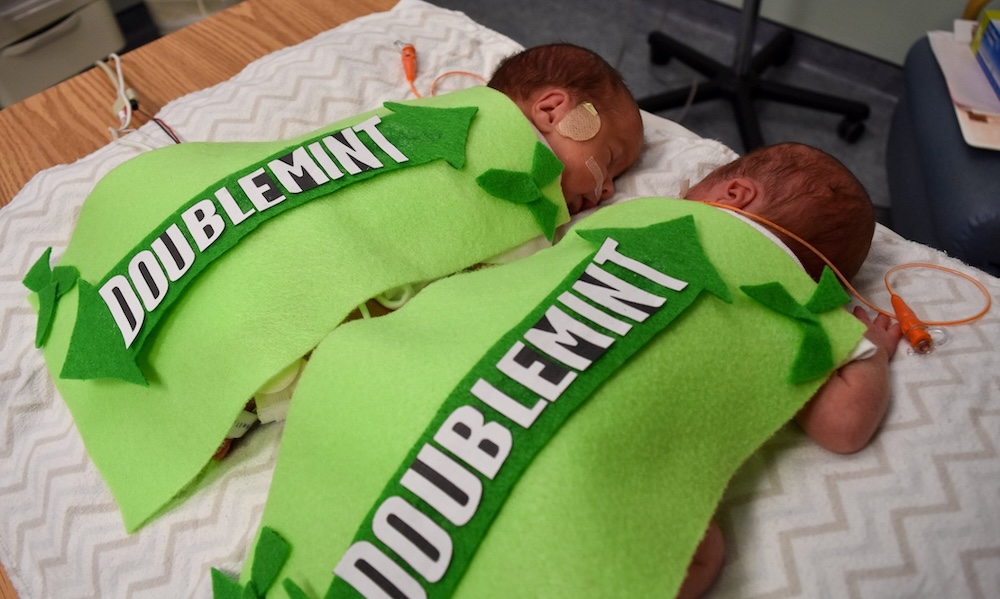
In 2020, 18,000 people shared the Halloween costumes post. Good Morning America and People Magazine featured the babies online. Then, in 2021, the Halloween babies were shared 106,000 times on Facebook and were noticed by The Today Show.
Many hospitals since have created their own tiny costumes, but Yamanda and her colleagues were among the first to put NICU babies in costumes.
“It was rewarding to feel like everyone recognized and saw the efforts of our unit’s hard work – what we put into both the success of the baby’s costumes and in their health outcomes.”
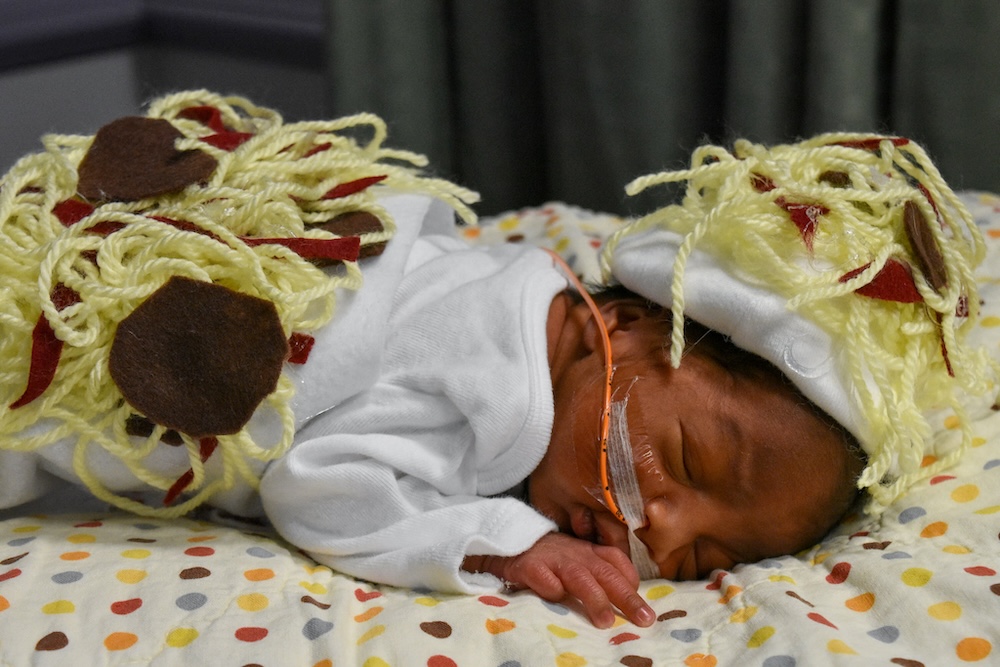
Now, every year, the night-shift brainstorms with Yamanda as the spearhead. “I coordinate and recruit other people to see my vision,” she laughed.
The nurses ask the parents for permission, but the costume idea is always a surprise. The nurses look for new or popular trends; they even consider the parents’ ages. “I see the age of their parents and consider what will resonate with them from their childhood.”
After brainstorming, she gathers the materials for the nurses to start assembling. Yamanda sets a high bar. “I don’t want people to feel like we’re making a Van Gogh, but within reason. We want the best for the babies. We want it to be great, so I push for greatness for these babies.”
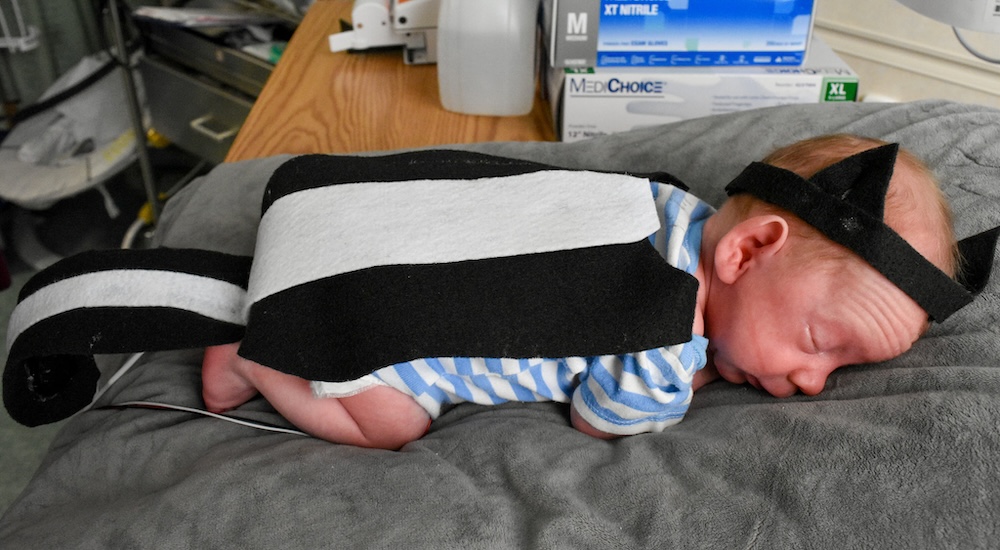
Night-shift starts crafting the costumes in the fall. Yamanda, a self-proclaimed night owl, sits at home and at the nurse’s station working on costumes in between patients. All NICU babies are continuously monitored through remote patient monitoring that displays their vital signs and other information on screens. There are also alarms to alert nurses to any problems.
In early October, Yamanda said, “The heat is on!”
Special Considerations for NICU Costumes
“We see toddlers zipped or buttoned up in costumes,” Yamanda said, “but with NICU babies, we have to think about how we can make a 2D costume for a baby who has IV lines or may be intubated. How will it translate so that it appears the baby is wearing a costume?
“We end up doing a layered costume. We arrange the layers in such a way that they pop out and give a 3D appearance.” The nurses even mock-up the costumes on a mannequin baby first.
The babies ultimately decide how to pose and the nurses adapt.
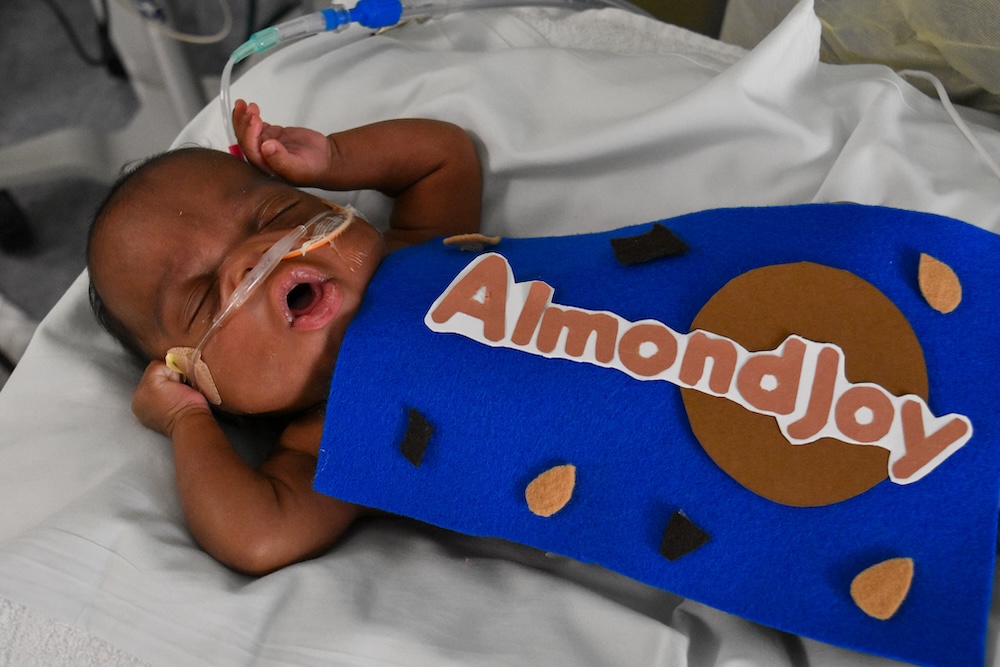
Why do Yamanda and the other nurses spend their free time on this tradition? “It’s all about the babies,” she said. “It’s their star moment. They get to be celebrities for the day.”
As the mother of a NICU baby, she hopes the parents enjoy as much of their NICU stay as possible, given the challenges. “They might not be able to dress their children and go out on Halloween. Sometimes, they can’t even touch their children. We want to normalize their experience.”
“We care about them. We love them. We want to see them grow and be successful.”
Yamanda’s family has grown and become successful. Both of her daughters are happy and healthy. Four months ago, her oldest daughter gave birth to Yamanda’s first grandson. Raven, her preemie, is now 19 years old and a 5’10 and a half foot-tall basketball player.
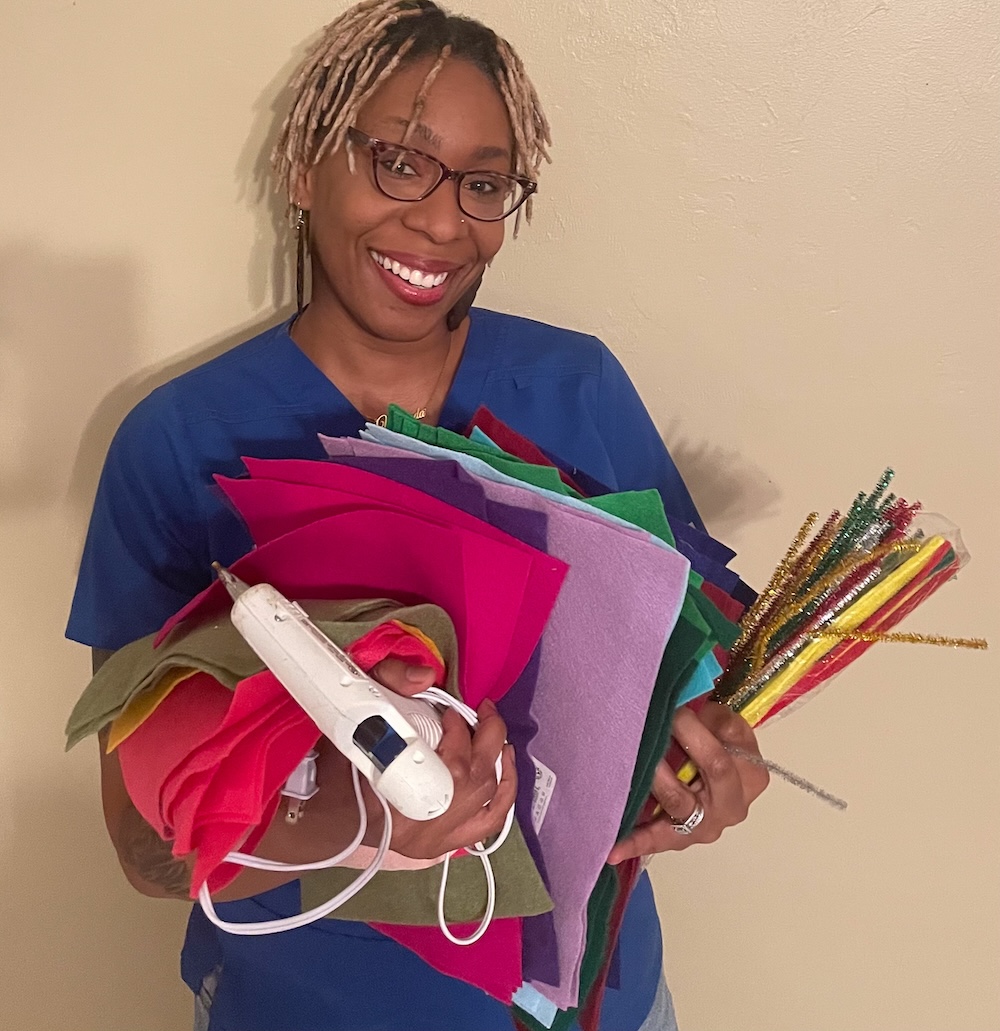
Yamanda prepares for another year of crafting costumes.
Regarding this year’s Halloween costumes, Yamanda said, “You’re gonna be blown away.”
To enjoy last year’s Halloween NICU babies, visit here.
Our colleagues at TMH are dedicated to providing patient-and-family-centered care. If you feel as passionate and motivated as they do, we encourage you to apply at TMH.ORG/Careers.
